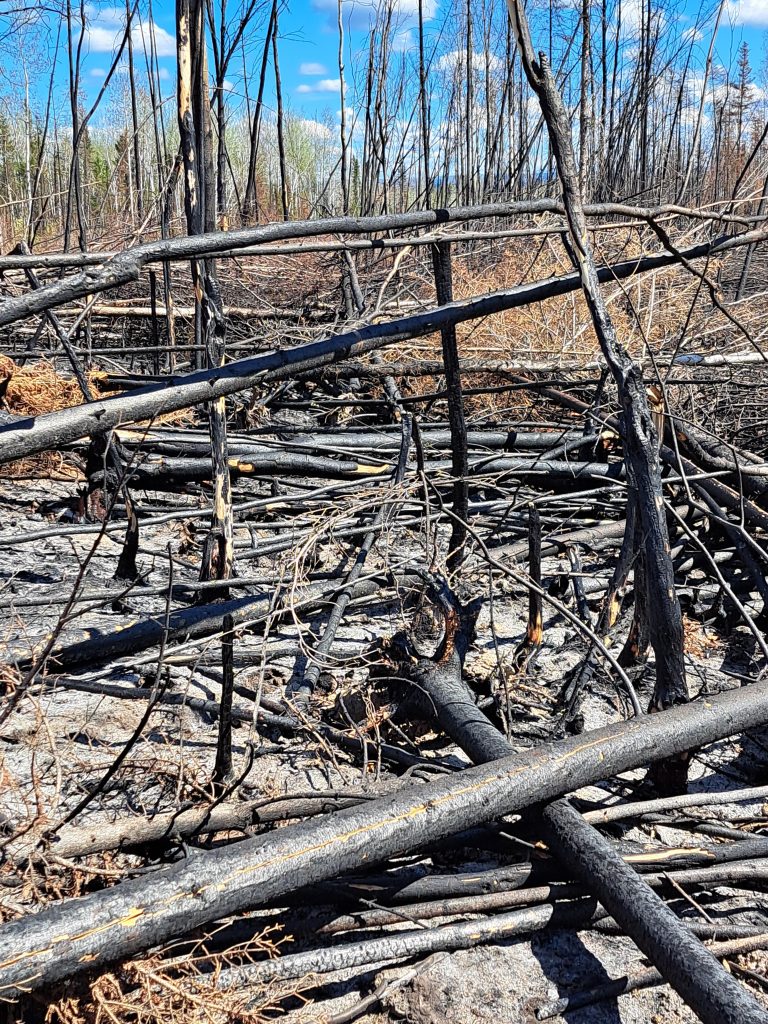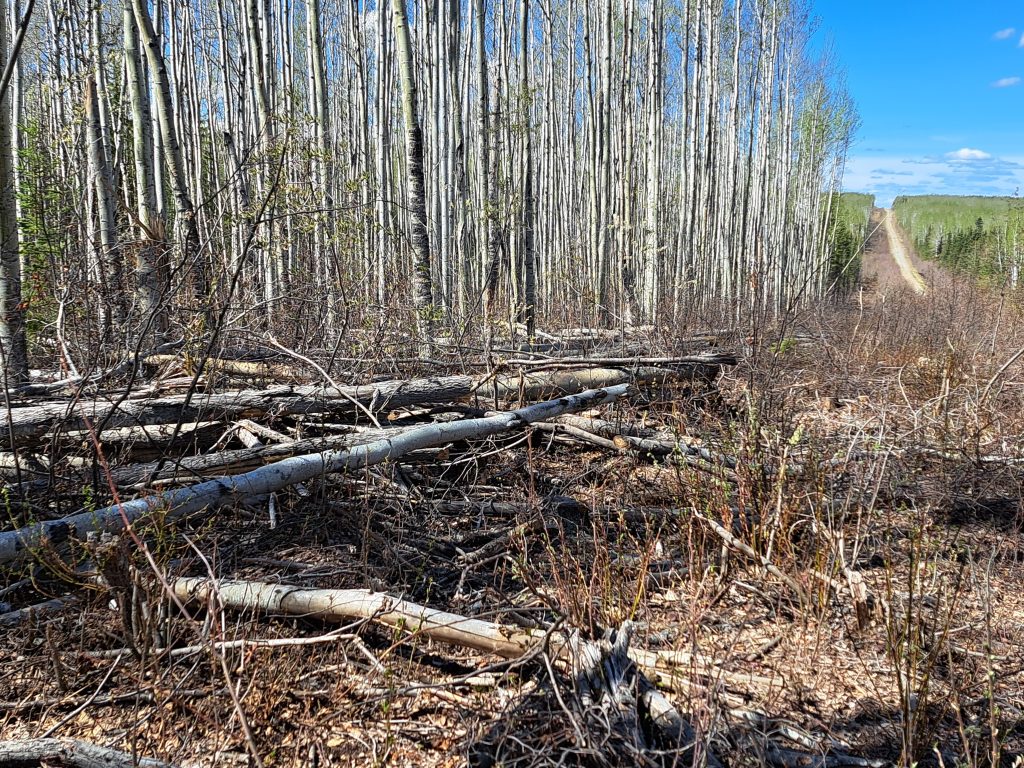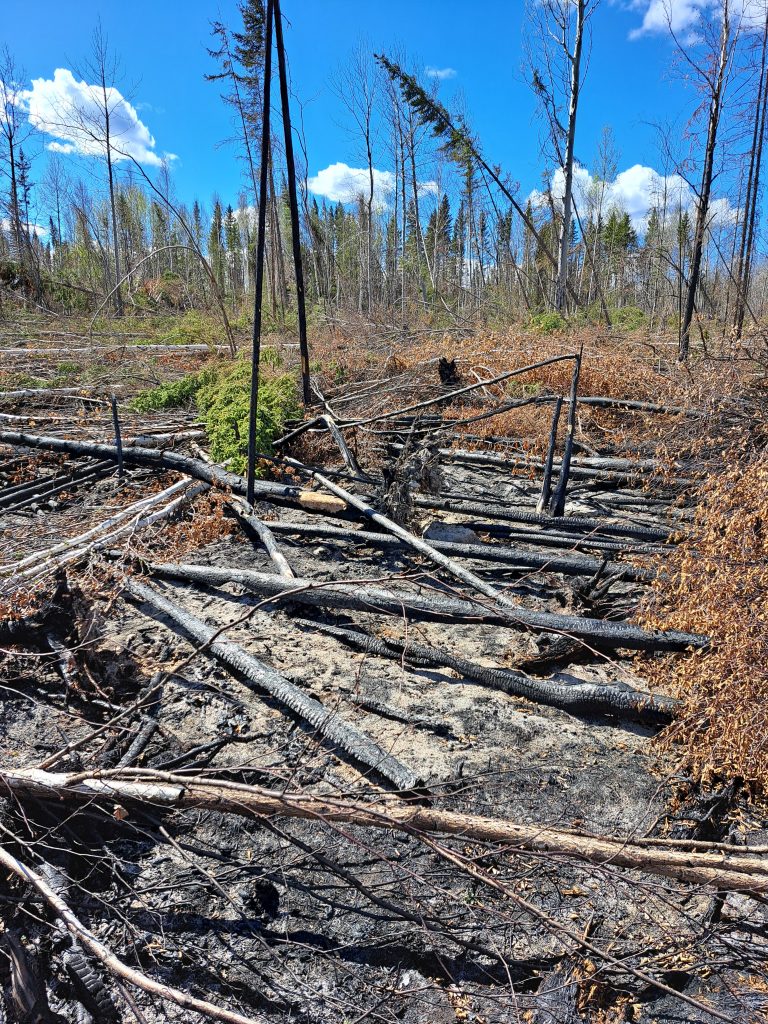In the Fort Nelson Zone, wildfires that smouldered undground through the winter are re-emerging as temperatures rise and conditions remain dry. These are not new ignitions but rather the continuation of prior seasons, resurfacing from compacted layers of duff, peat and organic material that held heat for months beneath the snowpack.
Helicopters and personnel are prioritizing areas that pose the greatest risk to values. In more remote locations, where wildfires show limited potential for growth or impact, response officers are conducting daily reconnaissance flights and ongoing assessments to inform operational decisions.
Extensive amounts of burned area from recent wildfire seasons paired with compounding years of drought continue to challenge response efforts in northeastern regions of the province. While persistent wildfire activity in an area is understandably frustrating, there are complex factors fueling the wildfire situation in the Fort Nelson Zone.
“There’s no fire agency in the world that has sufficient resources to respond to over 7,000 kilometres of perimeter.”
– Doug Smith, Senior Wildfire Officer, Prince George Fire Centre
Drought impacts on fire conditions
Extended drought not only increases the likelihood of fire, it makes wildfires more difficult and dangerous to fight. When fuels like grass, moss and duff dry out, wildfires ignite more easily, spread more rapidly and burn more deeply. Even moderate winds can trigger high-intensity fire behaviour, challenging suppression efforts and increasing risk to crews on the ground.
“Once a fire moves through and opens the stand to wind, the trees can’t move together like they used to. Roots have been burned. There’s still a green canopy with a lot of weight up top, and they’re failing in every direction.”
– Brad Loring, Falling Coordinator
One of the most significant hazards crews are facing is danger trees — burned or weakened trees that are prone to falling. When drought-stricken soils can no longer support tree roots, even healthy-looking trees fall with little warning. Before suppression work can begin, danger tree assessments and removals are necessary. Albeit time-consuming, these assessments are essential for crew safety.
“Because of ongoing drought, we’re seeing massive root failure across all tree species — even ones that are normally more resilient, like Aspen and Cottonwood. The ground burns are going deeper, and the roots are burning off.”
– Cole St. Jean, Danger Tree Specialist
Another significant challenge is blowdown — a term used to describe areas where large numbers of trees have been knocked over by wind. This happens when fire-damaged or drought-weakened trees lose structural stability and can no longer withstand even moderate gusts. Over time, this leads to large accumulations of downed trees on the forest floor. These dense layers of fallen timber become heavy fuel beds that burn hotter and longer, intensifying fire behaviour and firefighting conditions. Blowdown also limits crew access by blocking routes and creating unstable terrain. In many cases, crews must clear a trail before they can even begin suppression work, further slowing operations in already remote areas.



Drought effects on muskeg and peatlands
Much of the Fort Nelson Zone and northern areas of the Prince George Fire Centre are characterized by muskeg and peatlands—typically waterlogged, spongy terrain that serves as a natural firebreak. However, during extended periods of drought, these landscapes dry out significantly. As moisture levels drop, the surface layers of peat become combustible, allowing fire to burn deep into the organic soil. This not only makes suppression more complex and hazardous but also increases the likelihood of fires smouldering underground and re-emerging in subsequent seasons.
“We’re in the midst of a multi-year drought, and the fire is able to dig in very deep. There’s a thick organic soil layer in this forest type, and it’s burning below the surface. That’s causing longer suppression times and increased risk to crews.”
– Eric Kopetski, Fire Behaviour Analyst
Impacts of drought on forests in northern British Columbia, May 2024
This also reduces options for heavy equipment use, as dried-out muskeg can collapse under the weight of machinery or cause lasting environmental damage. As a result, crews have had to get creative, adapting winter suppression strategies or relying more heavily on hand tools and air support.
Access and operational challenges
Many of the wildfires currently burning are in remote areas. Suppression in these locations often depends on helicopters — for both crew transport and water delivery. However, aerial operations can be impacted by visibility, refuelling logistics and declining natural water sources due to drought.
While aircraft play a critical support role, they cannot extinguish wildfires on their own—especially those burning deep in peat or organic soils. In these cases, sustained ground operations are required to dig out and extinguish subsurface heat, which is labour-intensive and time-consuming.
Relationship between new activity and previous burn areas
Over the past two years, more than 1.8 million hectares have burned within the Prince George Fire Centre. As a result, many of the wildfires now surfacing are occurring in or near previously impacted areas. These old burn scars may slow fire growth due to reduced fuel loads, but they also create unpredictable conditions. Patchy fuels, weakened tree stands, and underground pockets of heat can still support low-intensity fire spread or smouldering activity.
“We’re looking at over 7,300 kilometres of potential holdover perimeter. That’s equivalent to driving from coast to coast across Canada.”
– Eric Kopetski, Fire Behaviour Analyst
It’s not unusual to see visible fire or smoke in the same general location over multiple years, especially in areas where fire burned deeply into the soil last season.
Strategic use of resources
With finite firefighting resources, response efforts are focused on wildfires that pose the highest risk to values such as communities, infrastructure, or critical habitats. Given the scale of wildfire activity—spanning over 1.8 million hectares—it would require an extraordinary number of personnel and equipment to actively suppress all hot spots.
More wildfires may become visible as the season progresses—including in areas that already burned. This visibility doesn’t always indicate danger. The BC Wildfire Service continues to monitor all known wildfires and assess them daily through helicopter reconnaissance and local intelligence. Crews are dispatched based on risk, access, expected fire behaviour, and resource availability, ensuring that the most critical areas receive attention when it is needed most.
